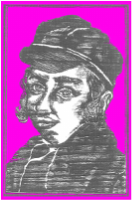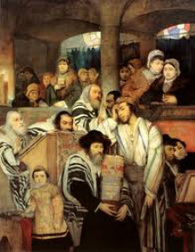
Current Pressing Issues on Gender and Judaism
As civil marriage laws change, and as women gain more equality in society at large, how are reverberations felt in the ways Judaism is practiced and understood? This mini-course examines current issues facing American and Israeli Jews surrounding questions of gender and sexuality. Issues to be explored include: Women of the Wall, reverberations of the Washington, D.C. Mikvah scandal, same sex Jewish marriage, Hareidi women running for office in Israel and the feminization of American Judaism.
I'll be teaching this mini-course at Case Western Reserve University's Siegal Lifelong Learning Program this Spring (2015). For more information and to register see here
As civil marriage laws change, and as women gain more equality in society at large, how are reverberations felt in the ways Judaism is practiced and understood? This mini-course examines current issues facing American and Israeli Jews surrounding questions of gender and sexuality. Issues to be explored include: Women of the Wall, reverberations of the Washington, D.C. Mikvah scandal, same sex Jewish marriage, Hareidi women running for office in Israel and the feminization of American Judaism.
I'll be teaching this mini-course at Case Western Reserve University's Siegal Lifelong Learning Program this Spring (2015). For more information and to register see here

Knowledge, Authority and Gender: Changing Roles in Judaism
Yentl wanted to study Jewish texts but could not do so without disguising herself as a man. This fictional character provides an exciting starting point for exploring the relationship between knowledge, religious authority and gender. We begin this mini-course by considering traditional attitudes toward women's religious education. Today, women across the Jewish spectrum (including much of the Orthodox world) have access to textual knowledge. We will discuss how this shift happened, as well as its implications, including the opening of positions of religious leadership to women. More broadly, we will examine connections between the democratization of knowledge, the weakening of religious authority, the quest for personal religious meaning, and the feminization of Jewish public life.
Yentl wanted to study Jewish texts but could not do so without disguising herself as a man. This fictional character provides an exciting starting point for exploring the relationship between knowledge, religious authority and gender. We begin this mini-course by considering traditional attitudes toward women's religious education. Today, women across the Jewish spectrum (including much of the Orthodox world) have access to textual knowledge. We will discuss how this shift happened, as well as its implications, including the opening of positions of religious leadership to women. More broadly, we will examine connections between the democratization of knowledge, the weakening of religious authority, the quest for personal religious meaning, and the feminization of Jewish public life.

Gender and Judaism
(I taught this course at Boston University, 2012)
The study of Judaism has long been organized around masculine categories. Yet, these have been generally treated as universal, normative and un-marked. To provide a richer, more expansive and accurate understanding of Judaism, this course considers gender – both the masculine and the feminine – as integral elements of study.
Our focus will be on halakha (prescriptive Judaism) as well as on the ways in which Judaism is practiced and lived. We will begin with an introduction to halakha and its gendered dimensions, and will then move into an exploration of four domains of Jewish life: Torah study, prayer, the body and family.
The study of “Gender and Judaism” might also be organized along a historical axis (exploring ways in which the role of gender in Judaism has changed over time), or along a geographic axis (comparing the ways in which gender is articulated in Judaism across various locales and cultural contexts). Although, these two analytical approaches do not serve as primary organizing principals here, they will frame several of our discussions. So, throughout the semester emphasis will be largely on gender at it is understood and practiced amongst American Jews today. Yet, we will make forays to some other areas of the globe (including Central Asia, North Africa, Western Europe and Israel) to explore the gendered dimensions of Judaism cross-culturally. In addition, we will occasionally move back in time, to study the ways in which gender categories were understood by Jews who lived in the rabbinic, medieval and early modern periods.
(I taught this course at Boston University, 2012)
The study of Judaism has long been organized around masculine categories. Yet, these have been generally treated as universal, normative and un-marked. To provide a richer, more expansive and accurate understanding of Judaism, this course considers gender – both the masculine and the feminine – as integral elements of study.
Our focus will be on halakha (prescriptive Judaism) as well as on the ways in which Judaism is practiced and lived. We will begin with an introduction to halakha and its gendered dimensions, and will then move into an exploration of four domains of Jewish life: Torah study, prayer, the body and family.
The study of “Gender and Judaism” might also be organized along a historical axis (exploring ways in which the role of gender in Judaism has changed over time), or along a geographic axis (comparing the ways in which gender is articulated in Judaism across various locales and cultural contexts). Although, these two analytical approaches do not serve as primary organizing principals here, they will frame several of our discussions. So, throughout the semester emphasis will be largely on gender at it is understood and practiced amongst American Jews today. Yet, we will make forays to some other areas of the globe (including Central Asia, North Africa, Western Europe and Israel) to explore the gendered dimensions of Judaism cross-culturally. In addition, we will occasionally move back in time, to study the ways in which gender categories were understood by Jews who lived in the rabbinic, medieval and early modern periods.
